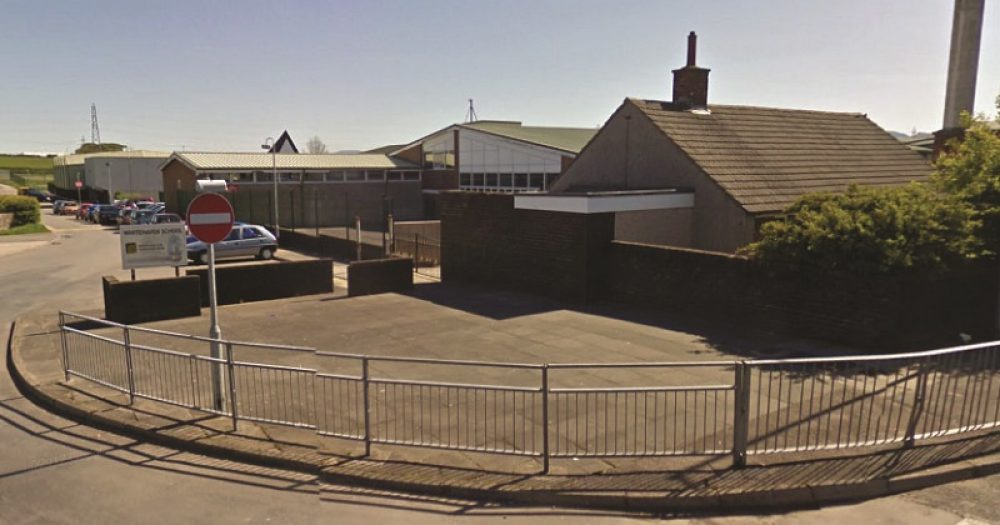The Cumbria Education Trust (CET) has been given leave to take on the troubled Whitehaven Academy in Cumbria, more than seven months after Bright Tribe announced its intention to walk away from the school.
In a statement, CET said it has been confirmed as the school’s new sponsor by the education secretary Damian Hinds, after its board of trustees passed a resolution to take over at the ailing school.
This is a brilliant news day for The Whitehaven Academy, at long last we are finally seeing the bright light in what can only be described as a very dark tunnel
Lord Agnew, the academies minister, has also confirmed the Department for Education will fund a “substantial capital programme”. The department would not say how much it intends to spend, but the CET says it will see the “majority of the existing school buildings demolished and rebuilt”.
“This agreement will provide a fresh start for everyone associated with Whitehaven Academy and will help ensure students get the education they deserve as part of a strong multi-academy trust,” said Agnew.
“The academy will be transformed to provide a modern learning environment, and I am confident that the Cumbria Education Trust has the expertise to improve standards for pupils.”
It comes at a pivotal time for the school, which has been at the centre of a row with parents and local officials over the state of school buildings and falling standard. Bright Tribe announced it would relinquish its control of the school last November, following criticism of its handling of the worsening situation.
CET, which runs six other schools in the county, was first lined up as Whitehaven’s new sponsor in March, but said at the time it had “many issues to review” before taking on the struggling school.
The trust has already begun providing school improvement support at the school, and used money from the government’s strategic school improvement fund to provide resources, including “much-needed” revision materials.
Lorrayne Hughes, chief executive of CET, said the trust’s first priority would be “a relentless focus on school improvement to ensure that every young person can reach their potential”.
The school has been in special measures since late 2016.
“We will be looking to raise aspirations so that all students will strive to ‘be the best they can be’ – the trust’s motto,” said Hughes. “The support we have received from the DfE and Education and Skills Funding Agency will ensure that we are able to continue on the improvement journey with pace.”
In a letter to parents, Whitehaven headteacher Warren Turner said he was “extremely pleased”, and “determined to ensure that the young people who attend The Whitehaven Academy have access to an improving education and I know that Cumbria Education Trust is committed to the academy and education provision in Cumbria”.
“We will benefit greatly from this new and exciting partnership,” he added.
Trudy Harrison, the MP for Copeland and a member of the parliamentary education committee, called for Bright Tribe to withdraw from the school last year when she was escorted from the site during a visit to check on flood damage.
She hailed a “brilliant news day for The Whitehaven Academy”.
“AT long last we are finally seeing the bright light in what can only be described as a very dark tunnel.
“Today signifies a new day for The Whitehaven Academy with a sponsor who I am personally excited about, the security of a new school being built, and an education that our students deserve to ensure their bright futures are realised in Copeland.”






At last, Whitehaven Academy will receive funds for rebuilding identified in 2008. Successive governments are to blame for the unacceptable delay.
http://www.localschoolsnetwork.org.uk/2018/07/after-ten-years-whitehaven-academy-is-to-get-rebuilding-it-needs
Curious why you don’t think the Local Authority should shoulder some, or all, of the blame.
It seems that in 2008, when the school was a maintained school, the local authority has let the buildings get into such a state that the only option was a total rebuild. Unsurprisingly, given the LA had proven itself to be totally unable to maintain the school’s previous buildings, the Government wasn’t going to spend £30 million on a new school only to risk it going the same way.
From previous comments on here I’ve made clear I’m not Bright Tribe’s biggest fan, but it has to be understood that if they’d taken on a school with such decrepit buildings it would make it practically impossible for them to have turned things round. So much of the annual budget would have been spent on sticking plaster and gaffer tape type works that didn’t fix things but just stopped it from collapsing, that there would have been nothing left for school improvement etc.
So now the DfE is having to step in to remedy the LA’s historic failure to maintain the buildings.
And guess what, Whitehaven suddenly stops being a SNOW and becomes a viable school for another academy trust to take on …
Mark – In 2004, four years before the 2008 academy plan, Ofsted said accommodation was ‘satisfactory.’ Inspectors mentioned ‘ongoing building work of creating two linked computer rooms’ and said ‘There is good strategic management of the accommodation with well-planned maintenance and refurbishment.’
This doesn’t suggest the ‘LA’s historic failure to maintain the buildings’..
We don’t know how much the building deteriorated between 2004 and 2008 when the rebuild was first mooted. But the need for new building might not have been, as you suggest, because the LA was incompetent but because the school, opened in 1972, needed to be brought up-to-date.
(I can’t provide a link to the Ofsted reports. They’re not on Ofsted’s website. But an internet search should find them).
I’m sorry, but Ofsted is as qualified to comment on the structural quality of buildings as my young son. They may well have said that the rooms were of a satisfactory size and layout, but did they carry out inspections and surveys into asbestos, subsidence etc.? Did they test the fire alarm, ventilation and M&E systems? Or was this a layman saying they couldn’t see anything wrong?
And I’ve been involved in a lot of school building projects – given the state of the national school estate if all you needed to do was bring the buildings “up to date” you’d be looking at a simple refurbishment, no-one would be talking about a £30 million rebuild. Additionally, if it was scheduled for BSF funding it would have been deemed to be among the worst buildings in the country.
BSF was an ambitious plan to rebuild or refurbish EVERY secondary school in England not just those which were the most crumbling.
It had many problems. That’s why Gove abandoned it.
But this left schools like Whitehaven in limbo. And although Gove cancelled BSF, many schools scheduled for rebuilding did actually get rebuilt. They were mostly academies. Another shameful example of academies being given priority over non-academies. https://www.bbc.co.uk/news/education-10682980
Mark – Ofsted may not have done a full structural survey (that’s beyond its remit). But you overlooked inspectors’ comment: ‘There is good strategic management of the accommodation with well-planned maintenance and refurbishment.’
Surely even Ofsted can see evidence of ‘well-planned maintenance and refurbishment’ – document proof, schedules, for example.
Yes, BSF was intended to look at every school, but they started at the bottom of the pile and were working their way up – quite obviously the ones that were most in need were first up, and by the time it was cancelled they hadn’t even reached the ‘reasonably maintained’ schools.
As for Ofsted, it’s not that I’m overlooking their comments – it’s just that I have zero confidence they know anything about building maintenance. That’s not meant to be a criticism, they’re appointed to review and evaluate the educational performance of a school. Take a look at the specification for what an Ofsted Inspector does and the qualifications they need (https://ofstedinspector-eoi.ofsted.gov.uk/Docs/Ofsted%20Inspector%20(OI)%20Specification.doc) – not a lot in there about needing experience in evaluating the structural quality of buildings.
If building maintenance was something Ofsted looked at, or thought was in their remit, why did their full inspections of Whitehaven in 2007, 2009, 2012 and 2013 not mention or refer to it at all?
Mark – between 2008 and 2010, Whitehaven School was scheduled for rebuilding under BFS. This was cancelled by the Coalition in 2010.
In 2012/13, a plan, Campus Whitehaven, began to be put together with local stakeholders including the council to provide new buildings for some local schools including Whitehaven on one site. But Bright Tribe withdrew from the plan in 2014 when Whitehaven School became an academy.
The deterioration in buildings on Whitehaven Academy’s site isn’t due to one cause: it’s a combination of possible LA underfunding due to the expectation of new premises (we don’t know the full extent of this), Labour attaching strings to any new school building, Coalition cancellation of BFS and Bright Tribe pulling out of an LA/local stakeholder plan to rebuild Whitehaven School.
The sad thing is that if Whitehaven School hadn’t become an academy it would be looking forward to new accommodation on the Campus Whitehaven. The project carried on without it.
Cumbria like all local authorities had a large number of schools to maintain with meagre capital resources which were cut by up to 80% in 2010. Resources for school buildings have always come from central government grants or borrowing approvals not local funding. BSF was not prioritised on building need, it was based on deprivation and standards which meant that many poor condition buildings did not get the priority they deserved and were starved of funds for the years when the big money went to BSF. Blaming the LA is ridiculous. This is a case of chronic under funding by central government. Many terrible school buildings remain across the country particularly in those LA areas which did not receive BSF rebuilds.
But you’re quite happy to blame academy trusts …
I am 100% against the Academy programme as there is no evidence it makes the slightest difference to educational standards and has wasted millions that could have been better spent on schools. I’ve never blamed Academy trusts for anything to do with capital investment since the allocation of capital is decided by central government. Too often the funds have been hypothecated to meet political objectives rather than allowing decisions to be taken based on building condition. Billions needs spending to bring school buildings especially secondary schools up to a reasonable modern standard. Instead millions has been spent building free schools where they aren’t needed.
Tell that to the parents of children within Harris academies …
Would that include parents of children who left before Year 11? Harris is among those with the biggest drop.
https://www.tes.com/news/ministers-urged-tackle-league-table-gaming-study-finds-schools-manage-out-pupils
Mark – there seems to be no reply button on your comment re BSF prioritisation. My understanding was that LAs put in bids. This may have been based on the state of the buildings or, as Sarah says, due to whether the school was in an area of deprivation, or some other criteria.
Re your question asking why Ofsted didn’t comment on buildings in later inspections. The answer is that the criteria changed. Inspections from 2000 are very different from those that came later (they’re more detailed for a start). That doesn’t mean inspectors don’t comment on buildings – they do, if they think it’s a safeguarding issue or the state of the building is affecting learning.
BSF was not based on bids for individual schools, it was an LA wide plan for the replacement or refurbishment of all secondary schools. At the time there was no consistent national data on building condition and things like the presence of asbestos were not given any weighting. The programme was not a building programme, it was touted as a programme of educational transformation. LAs which had generally high performing schools and relatively low levels of deprivation were put at the back of a very long queue, so never got the major investment in their secondary school estate of the inner city areas. Backlog maintenance at schools in the non BSF areas grew year on year as the allocated funding didn’t allow for large numbers of major schemes. Priority was therefore given to keeping buildings generally habitable and doing what was possible to upgrade specialist curriculum areas like science. Sometimes and for understandable reasons governors had to save multiple years of their own devolved capital to allow them to bring forward schemes to replace obsolete buildings, replace roofs or boilers etc. Of course this DFC was cut by 80% by Gove in the first months of the coalition government. It makes me furious to hear the blame for poor buildings laid at the feet of local authorities or governors. Successive governments are wholly to blame for the woeful state of school buildings and most especially Goves destructive cancellation of BSF, the Primary Capital Programme and other capital funding streams.
Sarah – thanks for the overview. Very useful.